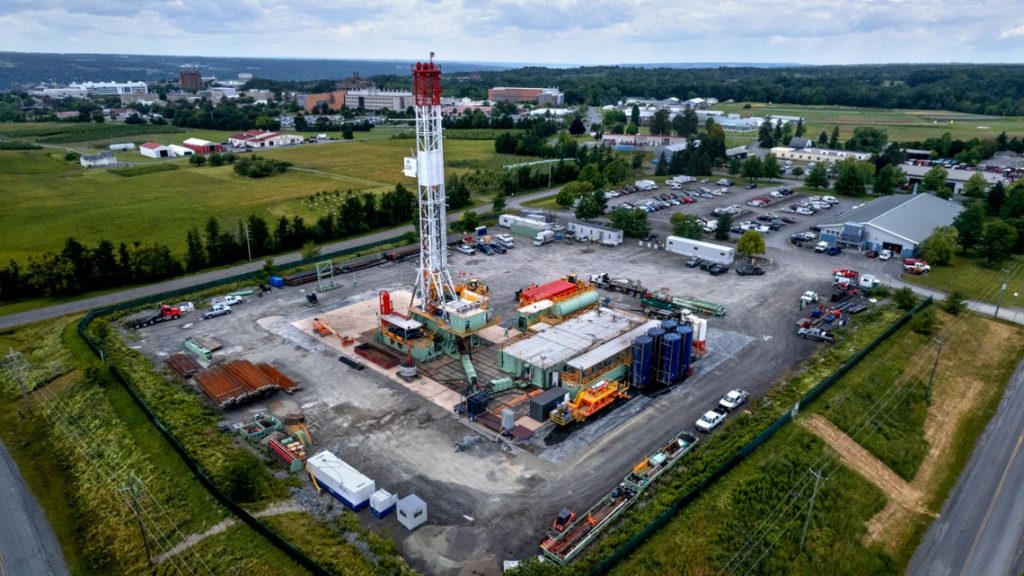Drilling starts for Cornell University geothermal project

The initial borehole being drilled in Cornell University will be used to collect data and assess the viability of the large-scale geothermal heating project.
Drilling has started for the Cornell University Borehole Observatory (CUBO) as part of plans to provide geothermal heating for the Ithaca campus. This is expected to last for about two months, after which the borehole will be tested or temperature, permeability, and to determine the characteristics of the subsurface geology.
Drilling for information
“This well will provide scientific information, but it will not be a production well,” explained Jeff Tester, professor in the Smith School of Chemical and Biomolecular Engineering and principal investigator for the project.
“Measurements made in the well will validate the temperatures and other properties at certain depths. This information will tell us a lot about the characteristics of the rock in a range where those temperatures could be useful for geothermal heat production, and will help us design and build an actual energy extraction process in the next phase.” added Tester.
Drilling of the borehole is being overseen by university faculty, staff from the National Renewable Energy Laboratory (NREL), and experienced geothermal consultants. The final 2300 feet of the total target depth of 10,000 feet will be the open-hole section of the well where the most important data will be collected.
During drilling, geophysical instruments will be used to measure rock properties and identify fractures. Drilling cutting and cores will also be collected in short intervals. Once the well has been drilled to the target total depth, injection testing will be done to locate permeable zones. Downhole instruments will then be used to measure temperature at depth for long-term monitoring.
The Cornell team is optimistic that they will find high-permeability zones with natural fractures in sedimentary rock and the upper part of crystalline basement between 7,500 and 10,000 feet.
Five water-monitoring wells and seismometers have been placed around the county to prevent unwanted side effects in terms of water quality and seismic activity. These are already being tracked and early warning systems are already in place.
Testing ground for similar efforts
We first reported on the plans for geothermal heating in Cornell University in early 2021. The plan is to heat the Ithaca campus with Earth Source Heat (ESH), a process where naturally heated water is pumped from underground and heat is transferred to a separate supply of water to be distributed within the campus’ heating pipeline.
This system will help the university meet its goal of carbon neutrality by 2035. Any learnings from the project will also aid in similar renewable energy efforts throughout the northeast and other parts of the U.S.
Other universities have also expressed interest in the project are waiting to see the results. “Everybody is very happy for us to demonstrate the feasibility of such a project,” commented ESH lead engineer Steve Beyers.
Next steps
Should the initial well yield successful results, the next phase will involve drilling a pair of wells – one for production and one for reinjection. According to preliminary estimates, three or four pairs of wells will be needed to heat the Ithaca campus.
Source: Cornell Chronicle